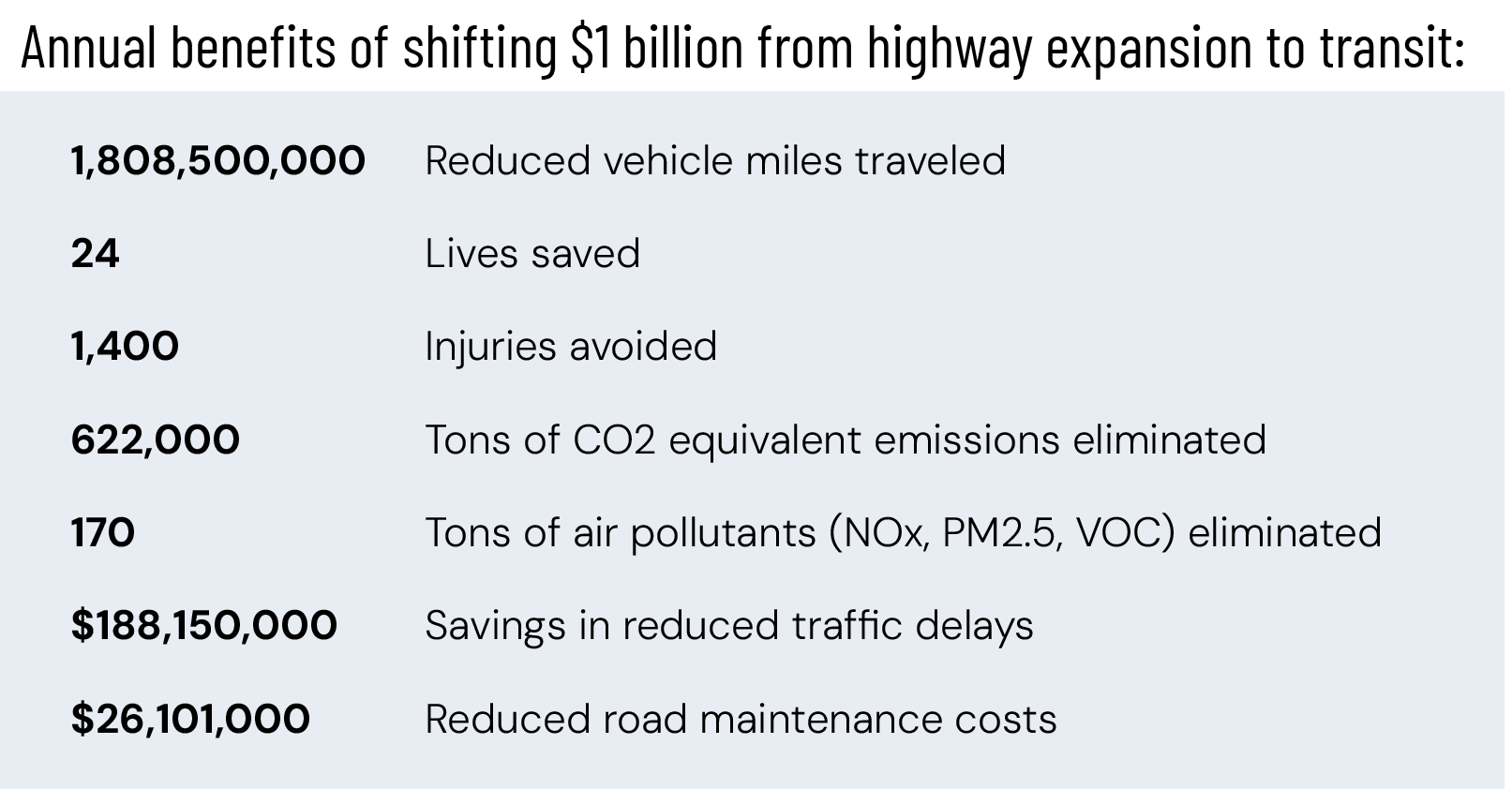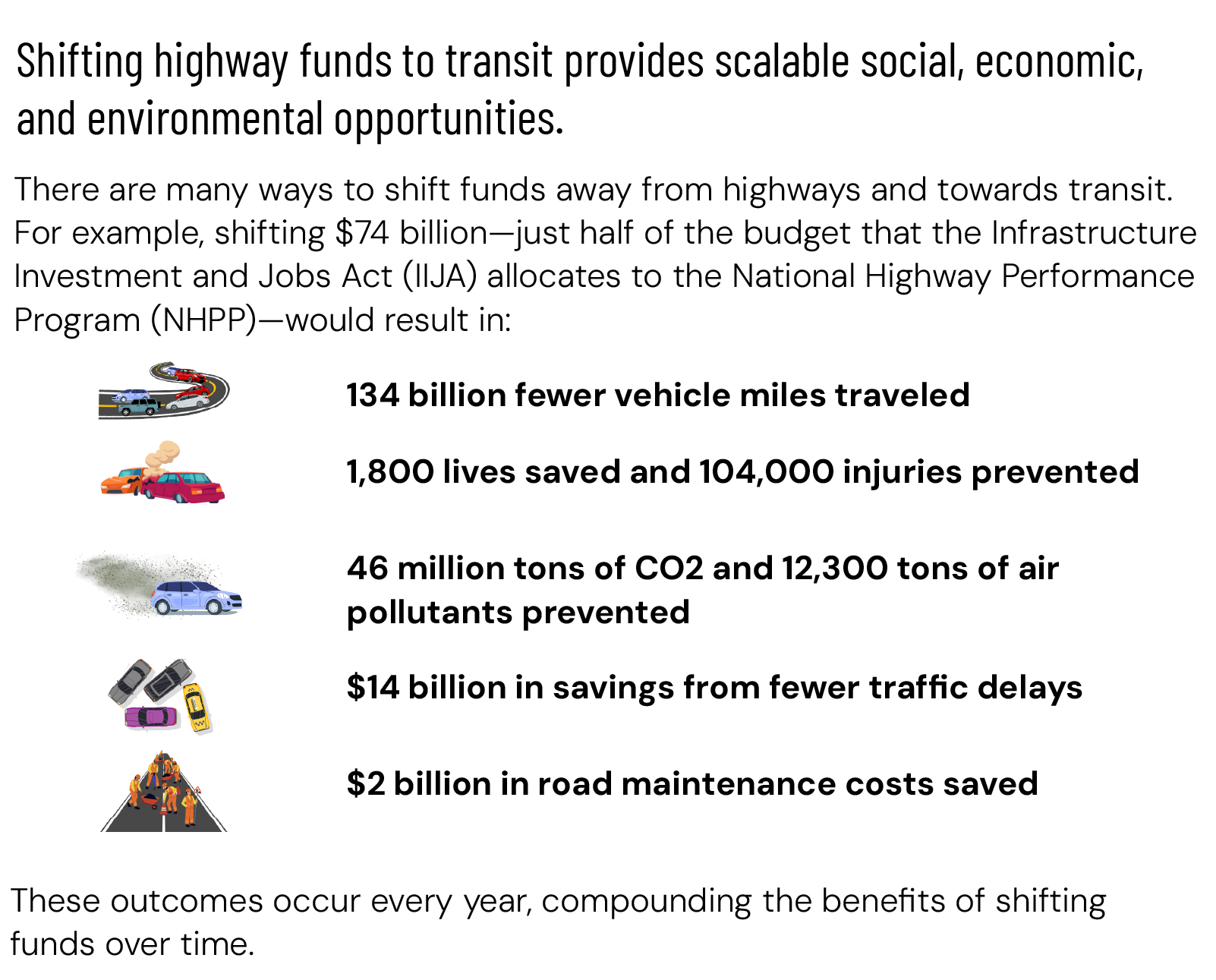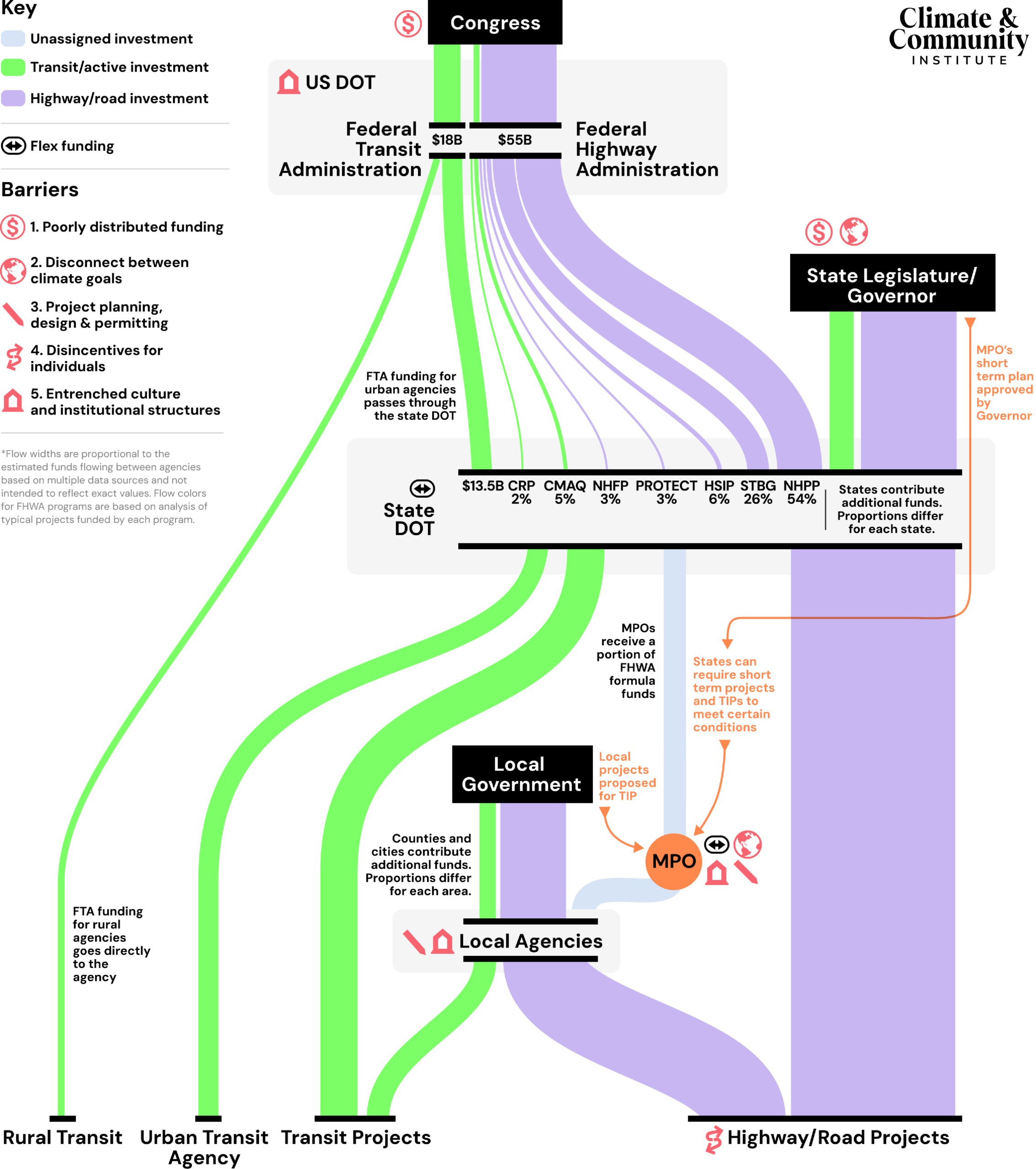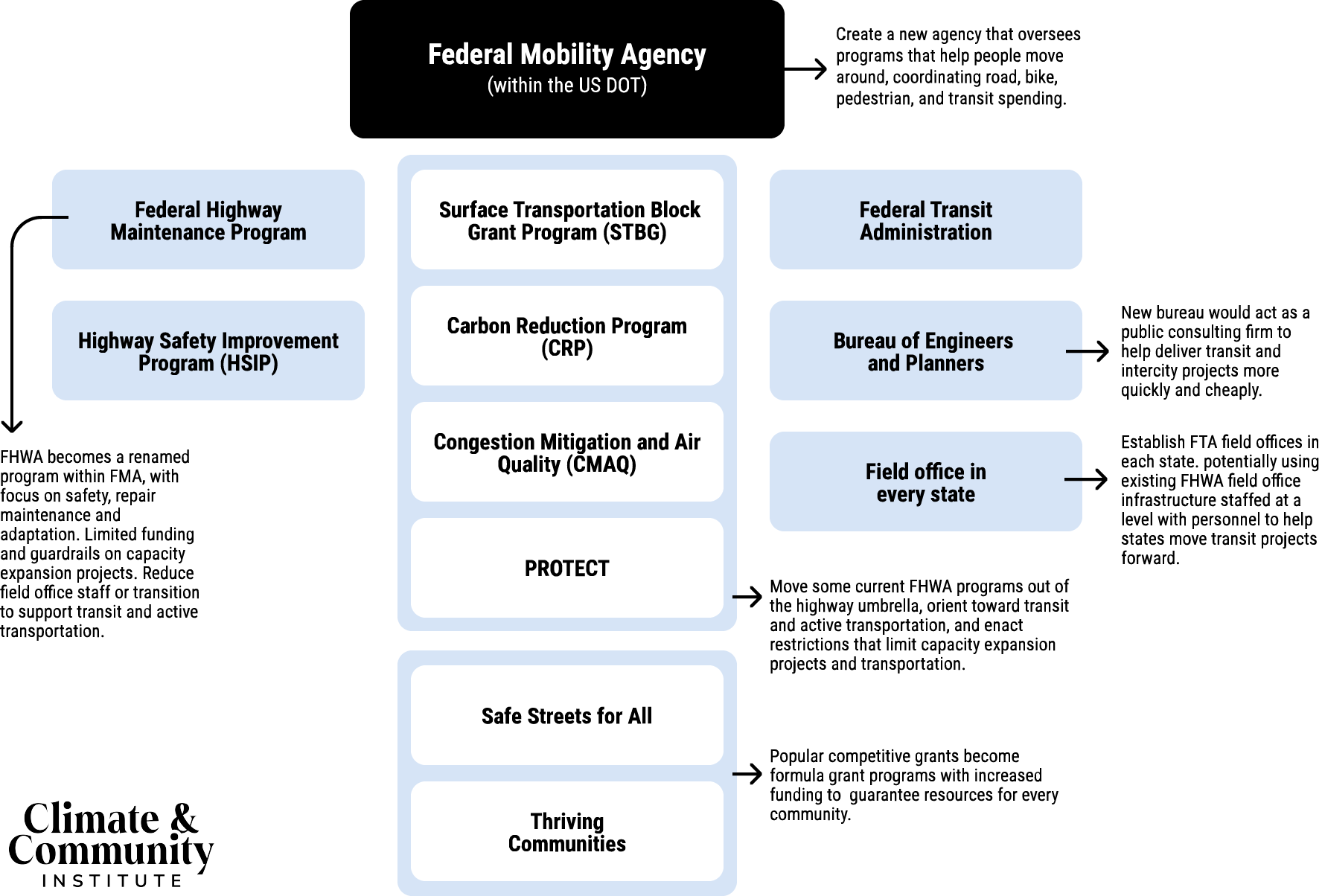Letting People Move
Transportation policy represents a key tool to address both the cost of living and climate crises. In the United States, the shortcomings of today’s transportation system impact many facets of life, ranging from health care access to job retention to air quality. CCI’s original modeling and analysis of states’ funding decisions show that they are undermining their residents’ well-being and their own financial interests by choosing to overwhelmingly fund roads and highways rather than distributing funding to other modes.
Intentional decisions have led to the current restrictive auto-centric US transportation system—but a deliberate policy agenda can lead to a new, more liberating system. Our new report outlines the imbalance in today’s transportation system, explains the impacts of this imbalance, and lays out concrete policy options for building a diversified transportation system that gives people more choice, reduces household expenses, and combats climate change.
The policy options that we propose fit into the following overarching strategies:
- Balance funding to support more freedom of transportation choices
- Connect climate goals and transportation planning
- Reorient project planning, design, and permitting to prioritize projects that reduce vehicle miles traveled (VMT), improve safety, improve transit, and serve disadvantaged communities
- Level the playing field by realigning incentives for individuals to use socially beneficial transportation options
- Transform institutional structures, culture, and capacity to favor diversified transportation
Modeling the full cost of highways
CCI modeling finds that every $1 billion shifted from highway widening to new urban rail transit is projected to reduce VMT by 1.8 million annually, save $1.7 billion in annual externalized social or environmental costs, and increase land values by $580 million. For context, Congress recently allocated $273 billion to the Federal Highway Administration’s (FHWA) core formula funding programs, most of which will be spent locally and regionally by state Departments of Transportation (DOTs).
Every dollar of this budget represents a choice for state governments and local transportation planners: either stay stuck in an outdated, harmful, and unfair transportation system, or seize an opportunity to build the better system of the future.


How transportation funding flows from the US DOT to local communities and five barriers to mode shift
Through a research process including interviews, literature review and policy examination, we have identified barriers within government policies and institutions that stand in the way of policies that would support mode shift and VMT reduction. Poorly distributed funding represents the core barrier, while some of the other barriers contribute directly to the funding imbalance by tilting design or project selection toward projects that serve only cars.

Policy recommendations
In the accompanying policy table and federal, state legislative, and state DOT policy agendas we present policy levers for overcoming these barriers and facilitating mode shift and VMT reduction from different levels of government.
While state and local governments can enact many of these policy recommendations, Congress has the opportunity to spur some of the most influential changes in the upcoming 2026 surface transportation reauthorization. For example, Congress can dramatically reprioritize the formula funds allocated to each state, revise permitting processes to favor transit, and restructure existing highway and transit programs to balance the resources available to each. This report proposes creating a new agency structure to facilitate transportation projects that prioritize people and climate, which would include placing the Federal Transit Administration and a restructured FHWA under a new Federal Mobility Agency.

Every additional $1 billion approved for highways pushes communities farther from economic prosperity and social welfare, locks in additional VMT and carbon emissions, and makes it harder for transit to reach its potential to bring down the cost of living for millions of households. This report is both an urgent call and a comprehensive playbook for shifting transportation funding from highways to transit and human-scale streets.

